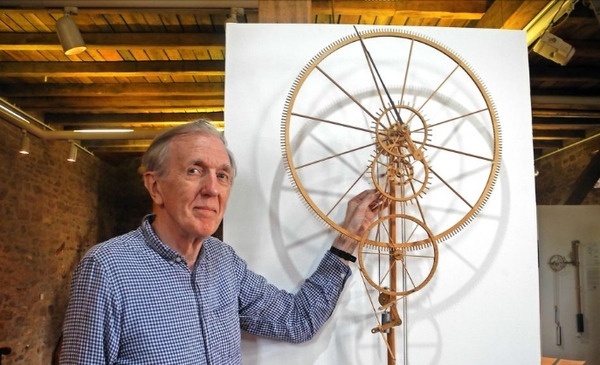

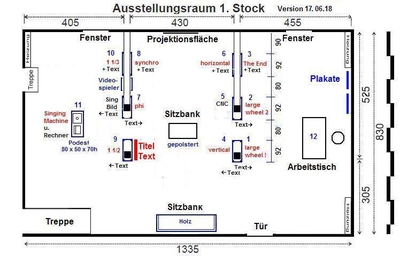
|
Exhibition layout drawing |
|
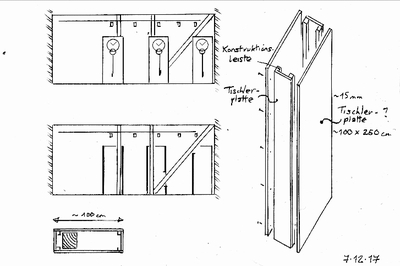 |
Construction sketch | |
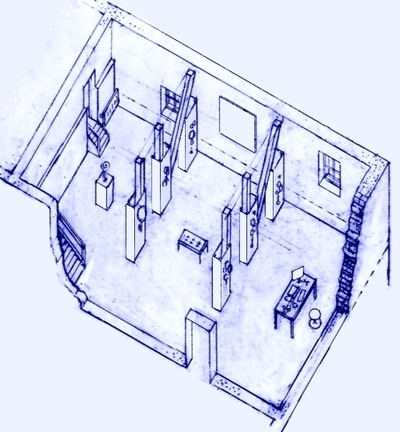
|
The upper floor exhibition space was divided by two rows of columns and diagonal braces; the walls are of exposed masonry. The museum is a Listed Building - so, no screws in the walls! I suggested enclosing the columns to provide 12 panels for displaying clocks and other material. The panels were made of recycled material and I am pleased to say that it will also be recycled for future exhibitions. |
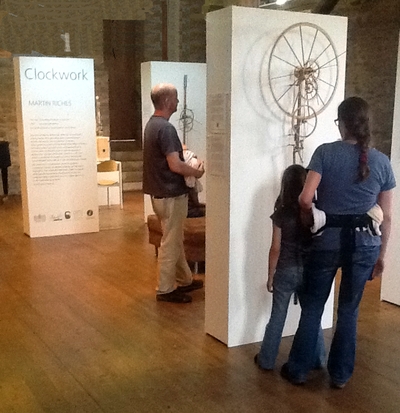
|
View from the entrance |
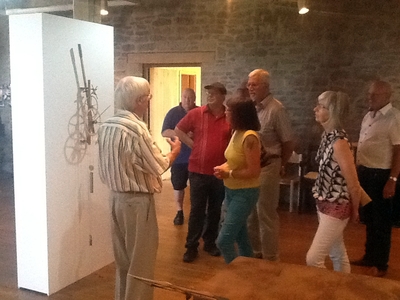
|
For me, one of the pleasures of this exhibition was listening to clear explanations of my clocks by a master clock maker, Klaus Hoffmann, which began All clocks have four components, a driving force, a time base, an escapement and a display. |
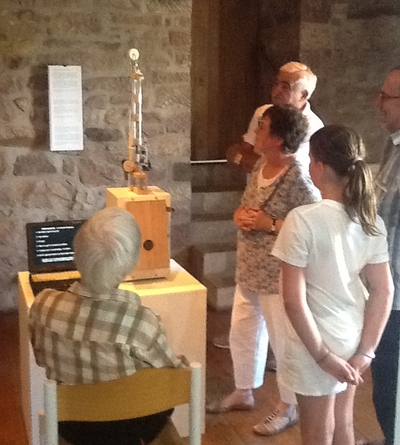
|
The Singing Machine demonstrated by Herr Hoffmann. It sang some scales and vowel sounds and its party piece: Ut Queant Laxis Dress note: The exhibition ran during the 2018 heatwave. Outside temperatures were around 35°C / 95°F but it was pleasantly cool within the massive walls of the museum. |
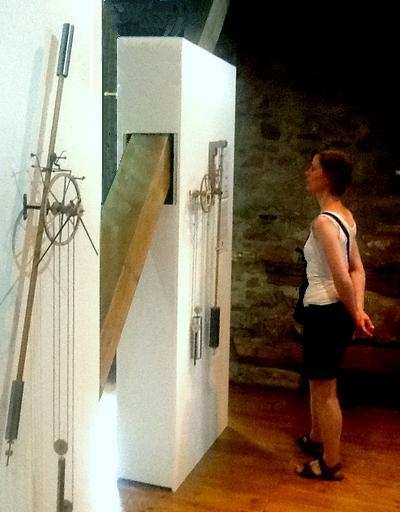
|
These two clocks received especially close attention. Their pendulums turn a so-called count wheel. Once a minute this wheel suddenly releases a mechanism to give a new impulse to the pendulum. The interest lies in waiting for it to happen and then, over several more minutes, figuring out how it works. |
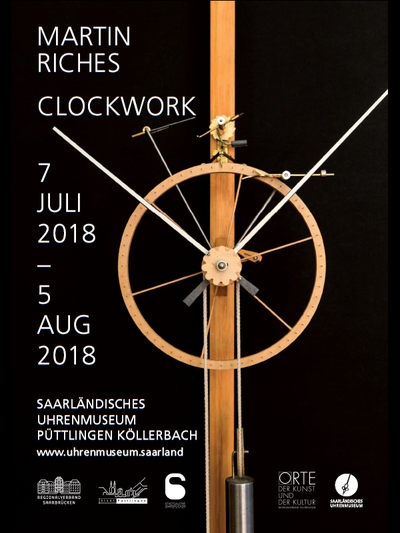
|
The exhibition was sponsored by:
|
